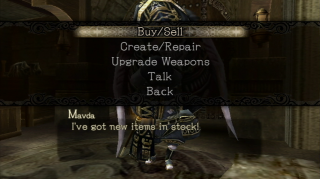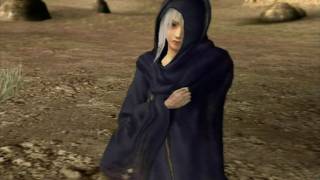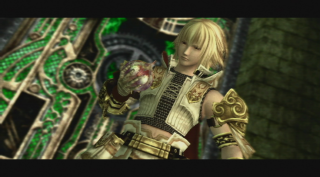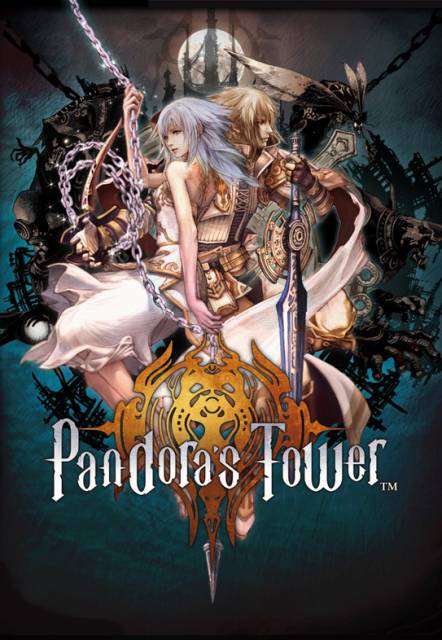A beautifully wrought tale of love and violence.
In most games, violence is considered a source of enjoyment and entertainment. Pandora’s Tower is not most games. Instead, it heavily condemns violence as a necessary evil at best and as a senseless evil at worst. This message is juxtaposed alongside a carefully wrought and beautifully executed relationship with one of the main characters, resulting in a fitting closer to the Nintendo Wii’s library.

The story begins with several kingdoms on the continent of Imperia embroiled in war. However, this struggle does not receive much attention. While this strategy does result in some unfortunate implications (such as citizenry being cowardly and heartless), it at least fulfills its purpose of setting the context for the main story: a girl named Elena has been cursed to slowly transform into a hideous monster, and it is up to Aeron, her knight in shining armor, to search for the cure. As this is the focus of the story, its chances of success depend on the quality of this one plot point and its ability to create an emotional bond with Elena. Fortunately, Pandora’s Tower does a fantastic job of bonding you with Elena. A lot of this is in the little touches. While exploring the towers that constitute most of the experience, the game will cut to Elena performing some activity such as translation or tending to her garden. This not only helps establish her character, but also makes it near impossible to forget about her at any point in the game. You will also occasionally get small glimpses into her past that help flesh her out as a human being. However, much of the sympathy is also derived from the story’s broad strokes. Her transformation looks as it should: hideous, painful, and just plain horrible. Yet the cure for this is not much better. She spends much of her time essentially caged up and cut off from human contact, leaving her with not much else to do but watch the curse take hold of her. This is on top of the inhuman things Elena has to do in order to maintain her humanity in the first place.
Perhaps the best part of this characterization is how well it integrates itself into the gameplay. While this applies to Aeron’s time in the towers, watching the clock to Elena’s transformation slowly count down, it is most felt in the game’s home environments. It is here where you can socialize with Elena, chatting with her and giving her gifts. Although anything in your inventory can be given as a gift, simply handing over some metal you’ve found in one of the towers or a bone you ripped from a living being will actually impair your relationship with her, forcing you to be mindful of what you give her. Selfless, too; the best gifts can only be bought with hard-earned money. They are often so expensive that you cannot possibly afford to buy for yourself and Elena. Improving your relationship with her requires constant sacrifice on your part. In the end, everything you are doing in this game, you are doing for Elena.

That does not necessarily mean that those actions are morally justifiable. In fact, Pandora’s Tower vehemently attacks the violence that you will commit so often. Part of this lies in how Elena’s curse is cured: by eating meat taken from monsters in the towers. While this is initially established as something bad (it goes against their most sacred moral codes), it gets worse as the game goes on. As she becomes more willing to eat meat, she also becomes more animalistic and less human, further making one question how effective a cure this is. The acquisition of the meat is even worse. The most effective meat is obtained from the Masters, giant creatures sealed away at the top of the towers. They cause no harm on their own; in fact, you must initiate all fights, making you the aggressor and your acts hard to defend morally. The only exceptions, for the most part, tend to be the mechanically designed Masters, further contributing to the game’s anti-violence stance (as the natural creatures have no tendency toward aggression).
Again, the best part of this formula is how it is integrated into the gameplay. Specifically, the motion controls. Actually ripping out a monster’s flesh requires that you yank the Wii Remote back. On top of this, getting good meat requires that you aim at certain parts of a monster’s body (thus thinking out how you will kill it) and doing any of this effectively requires you to pull back on the analog stick for maximum tension in the chain. While this creates a sense of weight and power that helps immerse you in the world, its true value is in how personal these actions are. Pushing a button to kill a living being is one thing, but physically ripping the meat from their bones is an entirely different matter. Such a control scheme places responsibility for the actions squarely on your shoulders, thus amplifying the game’s themes and messages.

Yet from a gameplay perspective, the motion controls do not hold up quite as well. This is not to say that they are bad or unresponsive; it is hard to botch simple pointing and flicking, and Pandora’s Tower successfully avoids this fate. However, combat based around flicking your wrist becomes painful after a while, especially in boss battles, which heavily utilize this mechanic. Fortunately, the rest of the combat proves to be mechanically solid. The controls are responsive and allow you a wide variety of actions, from charging up attacks to binding enemies with your chains. This allows for some strategy, although most fights do not demand that much, the Masters proving to be the exceptions. They can only be harmed by pulling at their flesh with your chain, but actually using the chain turns you into a sitting duck. The result are challenging boss battles that put your skills to the test and serve as an appropriate climax to each tower. True, the fighting tends to be sticky, locking you in place after almost any move, but Pandora’s Tower does nothing to hide this. Therefore, it is not entirely a restrictive flaw, but rather, a legitimate part of the game’s challenge.
Also worth mentioning are the environments, which (almost) consistently manage to be enthralling. One reason behind this is just the scale of these towers. Not so much in how long it takes to explore each one (they take about an hour or two each to complete), but more in relation to Aeron. Most of the time, they absolutely dwarf his tiny figure, creating a David and Goliath scenario very similar to the aforementioned boss battles. But disregarding aesthetics, the towers still have some appeal. Simply put, they are fun to play through, all because of the chain. In addition to rending flesh, the chain is also used to swing from objects, pull them this way and that, etc. A lot of good environmental puzzles and level design stem from the chain, and the towers are both mentally stimulating and engaging because of it. Their only significant downside is their lack of variety. Eventually, they just repeat ideas from previous towers with little, if any meaningful variation. The lack of exploration-based upgrades anywhere in the game just puts salt in the wound.
It should stand as a testament to the game’s accomplishments that these flaws do little to diminish the overall product. At the center of Pandora’s Tower is a very strong character whom the game is constantly giving you good reason to become emotionally attached to. Surrounding this core is a thoughtfully executed indictment of violence. Topping this all off are well built gameplay mechanics holding the experience together. Overall, Pandora’s Tower is a very strong action RPG, making it a worthy addition to any Wii owner’s library.

0 Comments